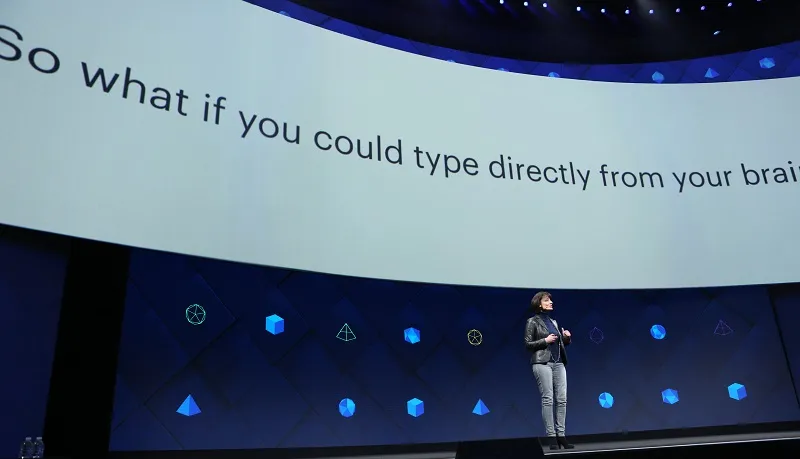Are Elon Musk's Neuralink and Facebook's 'typing by brain' realistic? MIT Tech Review has qualms
Applying artificial intelligence(AI) and machine learning algorithms to e-commerce and other sectors is currently a hot topic in the Indian startup ecosystem. But on the global front, Elon Musk and Mark Zuckerberg seem to have grander ambitions of linking human minds to computers.
In an exclusive story with WaitButWhy, Musk recently outlined his plans for his new venture, Neuralink. Meanwhile, Regina Dugan took the stage at F8, Facebook's developer conference, to share the company's 'typing-by-brain' project, which will let people mentally type at 100 words per minute.

But Antonio Regalado, Biomedicine Editor at MIT Technology Review, has published a strongly worded piece titled, 'With Neuralink, Elon Musk Promises Human-to-Human Telepathy. Don’t Believe It.' Not completely dissing the possibility of these technologies, Regalado though has a major issue with the timelines set forth by Zuckerberg (via Dugan) and Musk. He notes,
It’s not possible to assert that no future technology can make these things happen. But from what I know about brain implants, these achievements will be very difficult to attain, and the time lines are not only wrong—they’re pure malarkey.
Let us dive deeper to understand what he means.
Elon Musk’s plans with Neuralink
A visit to Neuralink's website gives viewers a brief overview of the startup's positioning and that they are currently hiring people across the board. It notes,
Neuralink is developing ultra-high bandwidth brain-machine interfaces to connect humans and computers. We are looking for exceptional engineers and scientists. No neuroscience experience is required: talent and drive matter far more.
The 36,400-word post on WaitButWhy starts from the basics of how human life evolved, how human speech came into existence, how the human brain works and argues that we should augment the slow, imprecise communication of our voices with a direct brain-to-computer linkup. Musk believes that this would permit both telepathy between people and advantageous relations with AI.
But before achieving telepathy, Neuralink will have to start small by finding a disease to treat and then work its way up. Considering all the factors, Musk believes that within eight to 10 years healthy people could be getting brain implants as new computer interfaces.
Is Neuralink's timeline realistic?
In his post on MIT Technology Review, Regalado notes that there is a big gap between the relatively crude ways of recording brain activity now and the future Musk believes in. Also, Musk hasn't clearly outlined how he aims to reach his target of achieving complete telepathy with brain implants. Moving to the estimated timeline, Regalado notes,
A brain implant is a medical device that requires neurosurgery. Proving that it works requires a stepwise series of experiments that each takes years, starting in rats or monkeys.
He then cited the example of NeuroPace, a company started in 1997, to develop an implant that controls epileptic seizures. The device got approved in 2013—16 years later. That was for a very serious medical condition in which brain surgery is common.
So Regalado is skeptical on how Neuralink will be able to put an implant in healthy people. He notes,
That would require extraordinary evidence of safety. And that’s hard to picture, because as soon as you open someone’s head you put that person’s life at risk. So Musk’s timeline for mind-enhancing implants is patently unrealistic.
Facebook’s plan
At F8, Facebook announced two projects focused on silent speech communications:
1. Typing with the brain
2. Hearing with skin

Facebook announced that they have a goal of creating a silent speech system capable of typing 100 words per minute straight from a user's brain. But the aim isn't to decode random thought, but to help users selectively choose what they wish to share. Facebook aims to achieve this in the next two years. Dugan said,
This is about decoding those words you’ve already decided to share by sending them to the speech centre of your brain. It’s a way to communicate with the speed and flexibility of your voice and the privacy of text. We want to do this with non-invasive, wearable sensors that can be manufactured at scale.
Facebook mentioned that it is also in the process of building hardware and software necessary to deliver language through the skin.
Potential flaws in Facebook's plan
Regalado notes that the gadget Facebook discussed would be outside the skull, where it's much harder to pick up accurate brain readings. Apparently, the idea is to beam photons through the skull and watch what bounces back, as it is possible to observe neural activity by measuring how cells reflect light.
In her talk, Dugan cited the work of Krishna Shenoy, a Stanford professor and part of a team that this year set a brain-typing record of eight words a minute. But Regalado pointed out that that was made possible by a decade of effort and by implanting electrodes inside the brain of paralysed volunteers.
Letting people accurately think-to-text as fast as they talk might be possible—but only with some big advances that are unlikely to reach perfection in two years.
Getting neurotechnology out of the lab
Brain implant technology has been developing pretty slowly and is still mostly stuck in academia precisely because it’s so complex. Several people told MIT Tech Review that money and gumption may actually be what’s needed to get neurotechnology out of the lab.
Musk creates his advantage by tackling problems that are too complex for more risk-averse entrepreneurs to take on, like manufacturing electric cars (Tesla) or launching reusable rockets (SpaceX). Musk has also succeeded, to a great extent, at both his big attempts, though he hasn't always stuck to his predicted timelines.
Regalado noted that that symbiosis between brains and computers isn’t fiction. There has been real-world progress in helping paralysed people move robotic arms and other advancements. Musk’s idea is that our brains could integrate with AI in ways that we wouldn’t even notice: imagine a sort of thought completion tool. So it’s not crazy to believe there could be some very interesting brain-computer interfaces in the future.
But that future is not as close at hand as Musk would have you believe.
To summarise, Regalado stated, one reason is that opening a person’s skull is not a trivial procedure. Another is that technology for safely recording from more than 100 neurons at once—neural dust, neural lace, optical arrays that thread through your blood vessels—remains mostly at the blueprint stage.
So what facts am I missing? What makes it even remotely okay that Musk and Facebook are promising the public telepathy within a few short years?







